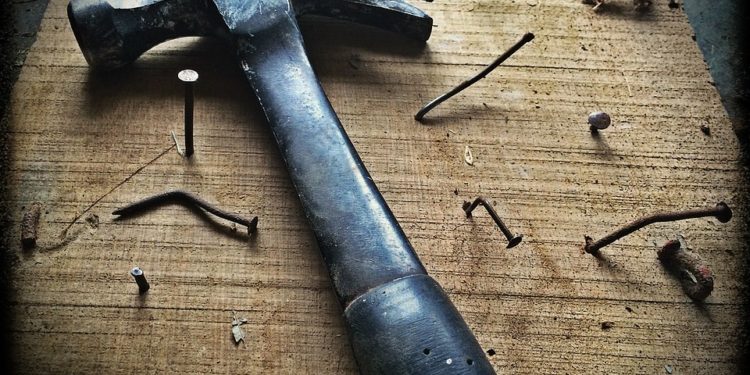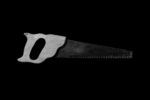How to Rack Out a Van DIY | The Ultimate Guide | 2023

If you are a contractor who uses a van to get to and from your place of work, you will probably benefit from customising your vehicle with racking storage. This will definitely apply if you need to carry a large amount of tools to and from job sites and places of work. If you need to transport materials to work with, a large van is also a must.
However, storage space alone is not enough. Organised storage is essential for those who want to be able to find their items quickly. Although you can pay to have your vehicle customised by professional outfitters, such services can cost a considerable amount of money. Purchasing a vehicle with pre-installed storage will cost you even more money.
However, it is fairly simple to add racking storage to a van yourself, provided you have some basic DIY knowledge at your disposal. Interested in adding some racking to your van interior? Our guide has all the advice you need to start putting together a first-rate plan for realising a superior storage solution.
What Do You Need to Store?
Before you start putting together a plan for your van storage, think about the kinds of items you need to carry with you on a typical day. Are a tradesman who needs to carry large volumes of building material? Relatively simple storage should be more than enough for your needs. Need to keep a large amount of tools with you at any one time? A more organised interior that allows for easy retrieval is the way to go. You also need to think about the items you need ready access to.
The items you use on a regular basis will need to be placed within easy reach. You also need to think about how secure your items need to be. Large power tools and heavier items will need to be safely stored in durable housing, while expensive items may need to be secured away with additional latches and padlocks. You may also need to add some waterproofing to certain storage cupboards and drawers.
Measure the Space
This is another essential part of planning your van racking project. If you have a large van with a spacious interior, you can be a little bit more flexible when it comes to designing onboard storage. If you have a much larger van, think about adding full-length shelving along each side of the van interior, leaving a walkway space between the two rows of shelving. You can also make use of the far end of the van interior for additional shelving and storage. Of course, you will need to leave sufficient clearance for moving around the interior to access your equipment and stored items.
Picking Suitable Materials
If you want reliable van racking that will last, do not skimp and save by purchasing inferior materials. Many people tend to opt for wood when putting together racking for their van interiors. Wood sheeting is a good option. It is fairly affordable and can be easily cut and adjusted to accommodate your van interior.
However, decent quality wood can be fairly heavy. If you plan on adding a substantial amount of racking to your van, the overall bulk of your storage can be noticeable when driving and impact fuel efficiency. However, this is not something to concern yourself over if you only intend to add racking to one side of your vehicle. That being said, avoid overdoing with racking if you only intend to place it on one side of your vehicle, as this can affect balance.
There are some other downsides to wood, however. Unless the wood you are using has been treated and finished before converting it to racking storage, it will wear easily over time. Thin sheet materials such are particularly brittle and can easily become damaged if snagged by a tool as you retrieve it. You will undoubtedly have to perform some upkeep to keep your wooden racking in useable condition. To overcome this issue, think about adding a coat of paint or sealant to wood before building your racking solution.
Assembling Storage
Before you think about securing your racking to your van interior, you will first want to assemble the bare bones of your storage. Keep things simple with a basic framework, before adding backing to the main structure. Make sure all components are securely attached to each other before turning your attentions to securing it to your van ribs. If you are using cheaper materials such as MDF, it is advised that you use both premium MDF screws and additional sealant to ensure your racking frames hold firm. You may also want to reinforce them with additional brackets to ensure they do not collapse when loaded with heavy equipment.
Securing Racking to a Van
When you have your racking assembled, you can focus on attaching it the van itself. You can not simply place free-standing storage in the back of a van and hope for the best. When loaded with tools and other heavy items, such shelving will simply topple over, rendering it useless and defeating the point of the racking. You need to ensure that your racking is physically connected to the interior walls of your van.
You can use fasteners such as RivNuts or PlusNuts in order to attach racking to van ribs securely. Make sure any fasteners you are using are the right size for any drill holes within your racking to ensure a perfect fit. You may find that fasteners loosen over time, especially if your racking is consistently loaded with heavy items. It is therefore worth taking the time to inspect the condition of your racking once every couple of months. If the fasteners look like they need re-tightening, you can perform quick maintenance to ensure your racking is fit for purpose going forward.
Never Overload Racking
Once you have kitted out the back of a van with racking, it can be tempting to store as much as possible in your new shelving arrangement. However, be careful not to overload racking. Not only do you want to avoid adding unnecessary weight to your vehicle, you should avoid cramming too much in racking as it may put unnecessary strain on the storage structure itself. When adding items to racking, try to distribute items evenly. This is better for both your vehicle and the racking itself.





